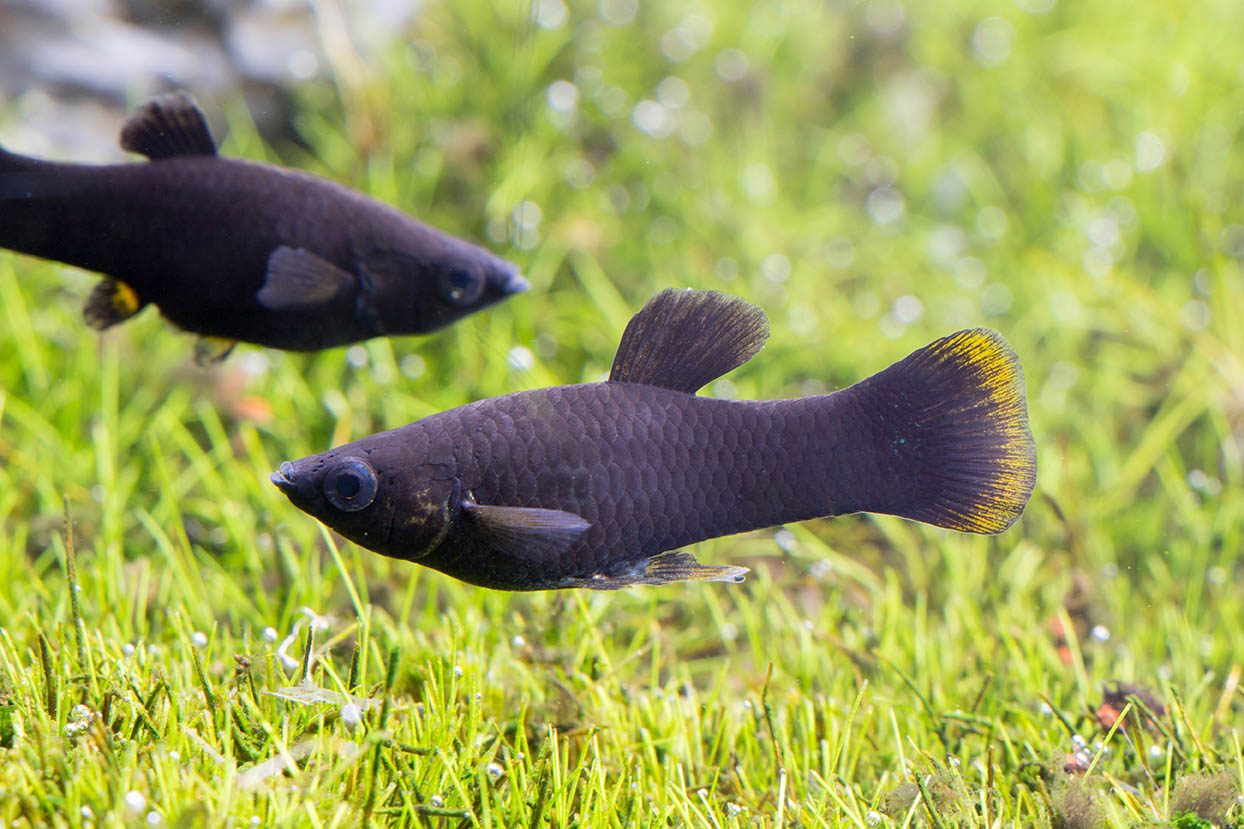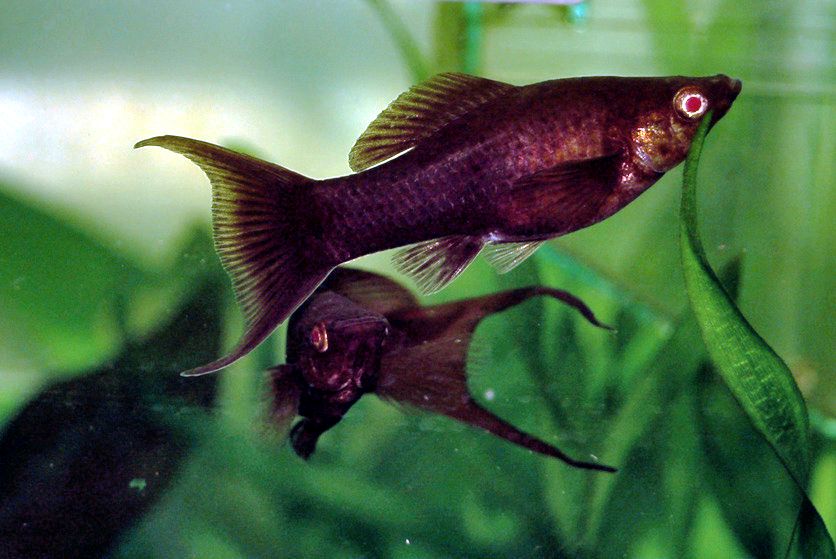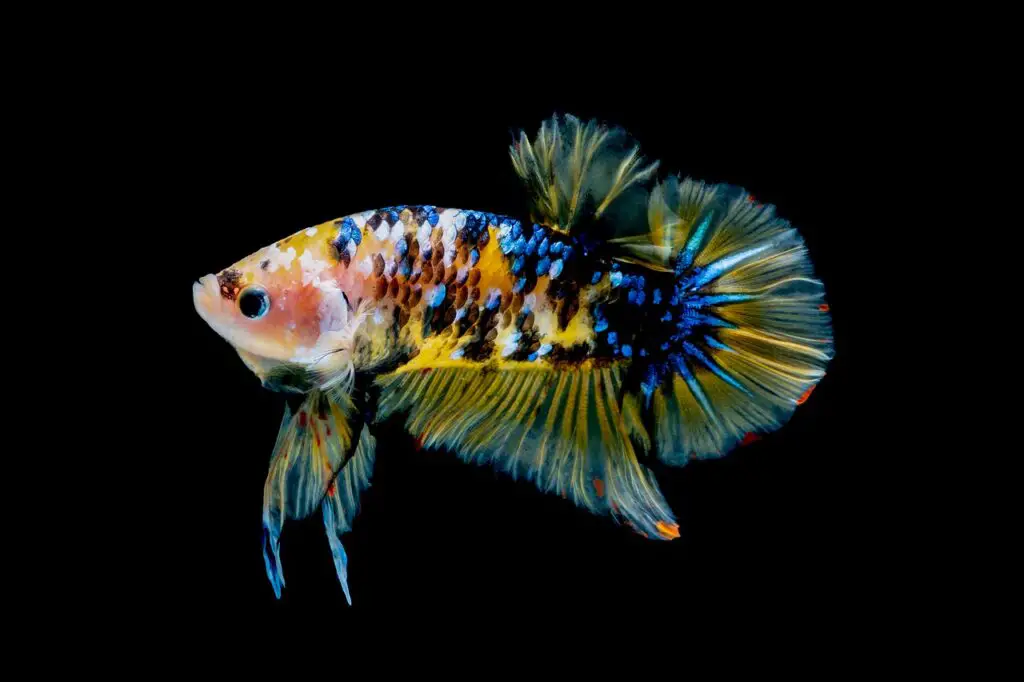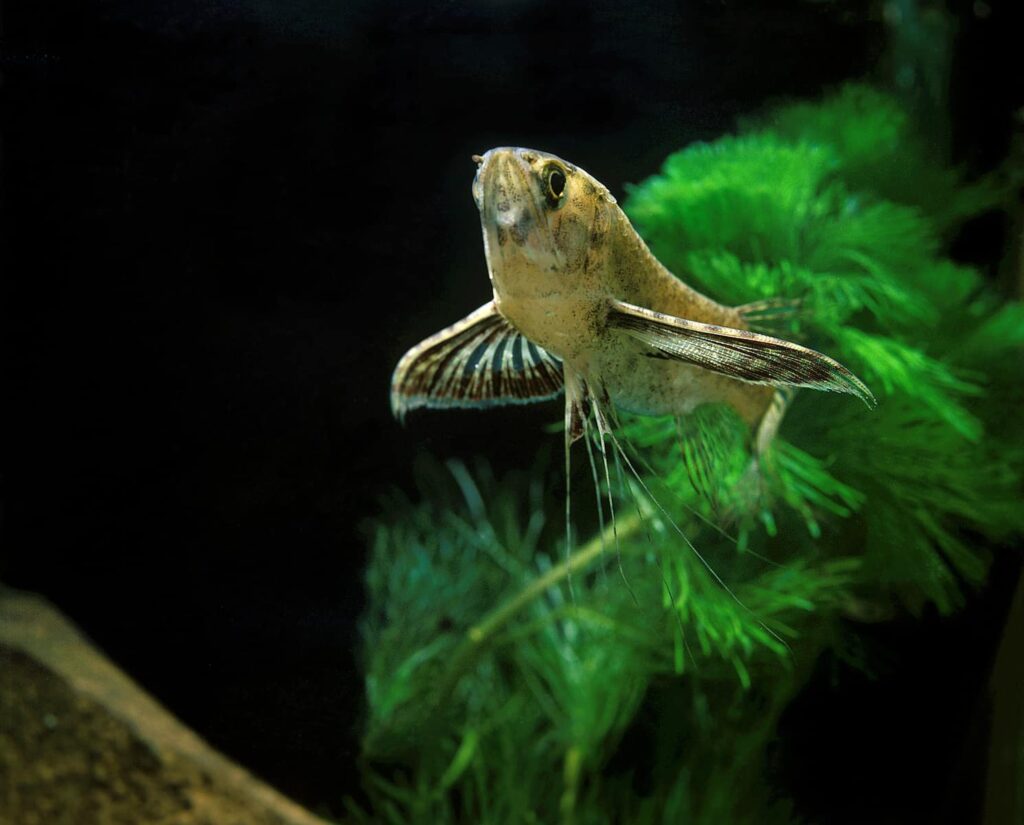Black Molly
These interesting fish are sometimes referred to as the ‘Common Molly’ or ‘Short Finned Molly’. Their natural habitat is the stream waters of Mexico and brackish waters of the Mexican coastline. Taking their name from their solid black coloring, they have a dramatic appearance and can be easily identified in the aquarium next to other colorful fish. In this guide, we will take a look at the characteristics of the Black Molly and how you can take care of them in your own aquarium.
- Fish Lifespan: Up to 5 Years
- Tank Size: At Least 10 Gallons
- Water Temperature: Between 72F and 78F
- pH: Between 7.5 and 8.5
- Hardness: Between 15 and 30 dGH
- Compatibility: Compatible with Tetras, Angelfish and Swordtails
- Fish Size: Up to 3 Inches
How do you take care of Black Mollies?
These fish are normally friendly, known as cleaners – so they are usually sociable and calm in the right conditions. Aggressive fish will cause them stress and gather males may be aggressive in return. If housed with other docile fish, there will be harmony in the aquarium which is, of course, better for everybody!
Due to the temperament of these fish, one of the best things you can do is set up a tank with plenty of space for them to hide in if need be. You should also make sure to set them up in a tank with similar sized fish and other swimmers.
On the whole, the Black Molly doesn’t have needs that are particularly difficult to arrange for. Their water hardness needs are reasonable, and you’ll generally need a 10 gallon tank, minimum, for one fish on its own. As always, it’s likely good to look for a larger tank, just in case you want more!
Are black Mollies aggressive?
Black Molly Fish can live in harmony with some other fish in an aquarium, but they need plenty of space and great care should be taken to not overcrowd them.
They can certainly become more aggressive and territorial than some other mollies, but knowledgeable and careful owners can ensure adequate space and water features, enabling other occupants to take refuge if needed.
Males are aggressive in their pursuit of females and it is advisable to have at least three females per male, to keep the male busy and allow the females some alternate respite! Occupying fish with interesting features and plants gives them something to keep busy exploring and nibble between feeding times! Poor welfare sometimes leads to aggression, as does competing for the attention of the female(s)!
How many Black Mollies should be kept together?
A 10 gallon tank is thought to be suitable for one Black Molly with an additional minimum of three gallons for each fish thereafter. They are prolific breeders – once owners mix males and females, you should be prepared for babies once the adult fish are mature. You will quickly need a second tank or at least one in a larger size! Up to 100 Black Molly babies can be born at a time so you will need a plan for what to do with them if breeding!
How big do Black Mollies get?
These fish can range on average from 3.2 inches for the males, to 4.8 inches for the females.

It is not unusual for Black Molly fish in captivity to fail to reach average lengths when the tanks are too small or overcrowded. They are energetic, roaming fish, often spending time at the surface of the water, so overcrowding in a tank can inhibit growth as well as cause stress.
Competing for food may also be a problem where other quicker or aggressive fish prevent others getting sufficient nourishment. Depending on your circumstances, it may be ideal to feed them more than once a day which may help those fish who failed to eat at an earlier time.
What do Black Molly fish eat?
Black Molly fish are omnivores. They love blood worms, which can be purchased in freeze dried form as well as algae.
They enjoy a varied diet of shrimp-based foods, and other types of flakes are also popular at feeding time. It is best to not offer food just prior to bedtime as that may go unseen and wasted, which on decomposing can be hazardous to the fish.
Separating Black Molly baby fish into a tank of their own can be prudent! They can eat the same diet as adults, and the adult fish in the aquarium are at risk of eating them, too! Therefore, if you want your Black Molly babies to thrive, separate them into a nursery tank and feed them separately.
Offer them the same diet as their parents – grind up the flakes until as they grow big enough, and they can tackle them at the normal size. It is interesting to see their little bodies develop and feeding times with ‘the children’ can be especially fascinating for everyone to watch!
Do Molly fish die easily?
Fin rot, flukes and Velvet Disease are all illnesses that Black Molly fish can succumb to. Cleanliness of the water and food quality is of paramount importance. Over-feeding can cause food to drift to the bottom of the tank or surfaces of plants and rocks, where the decaying matter contaminates the water and can quickly detract from the quality of the water from which the fish cannot escape.

Where behavioral changes occur, or the fish have mottled or other marks on their skin, further investigation is advised – and immediate action taken. Disease can spread rapidly from one fish to another if left untreated, and sometimes separation for treatment is a good idea – unless you suspect other fish may have been affected.
Sometimes these fish succumb to injury and again, recuperation in a separate tank, if possible, may be a good idea. Overcrowding these fish causes considerable stress, and their longevity can be even affected by this.
As their natural habit is huge, it is far better for them to have a large enough space to roam around. What’s more, a varied tank with lots to see and explore is going to provide your Mollies with a better quality of life.
Why is my Black Molly laying on the bottom of the tank?
There are several possible reasons for you to see this happening. First of all, the water temperature may need adjusting. Refer to figures at top of this article to find the optimum range and do reach out to your local expert!
Secondly, the fish may have ‘Ich’, or ‘Swim Bladder Disease’. Further investigation will be needed. Some diseases, if discovered quickly enough, are treatable. Separation from other fish may be desirable – if not essential!
Do Molly fish need light at night?
No, fish need a period of darkness just as if they were living in their natural habitat. An average of 8 to 10 hours is ideal to allow them to rest and adopt a rhythm of activity during ‘daylight’ hours in which they would normally, play, socialise, eat and explore.
How many babies can a Black Molly have?
It is entirely possible for a Black Molly to sire 100 babies in any one go. They tend to be some of the most prolific propagators in a brackish tank, meaning that if you are set on breeding up a community with lots of little swimmers, you are looking at an ideal choice.
However, the ‘100’ mark certainly isn’t a goal, and it’s not always a given, either! Younger female Black Molly fish have fewer babies, and the maturity of a female can be sometimes estimated by the average numbers of offspring she has.
Do Black Mollies lay eggs?
Yes! As mentioned above, female Mollies can give birth to 100 young at once at any one time. It’s neither a target nor a minimum expectation, though!

When it comes to laying eggs, the female Molly does not always release all the offspring in one go, and it is more common for her to store the babies and release them at various stages, sometimes at 4 to 8 weeks apart in differing quantities, from an average 30 or 40, to more for a more mature female.
Once impregnated, it is sometimes a good idea to separate the male, unless there is another female in the tank, because he may continue to aggressively pursue the female to her detriment or that of the offspring.
Once all offspring have been released, or at each stage, sometimes the males are separated from the mother. Sadly, it is not uncommon for female Molly fish to die after delivery. This is thought to be due to excessive strain of the intermittent labor, or ammonia burns from the water.
Black Mollies can be wonderful fish to look after in your own tank! However, as with all fish you look after, make sure you help them with specific tank and water demands.



